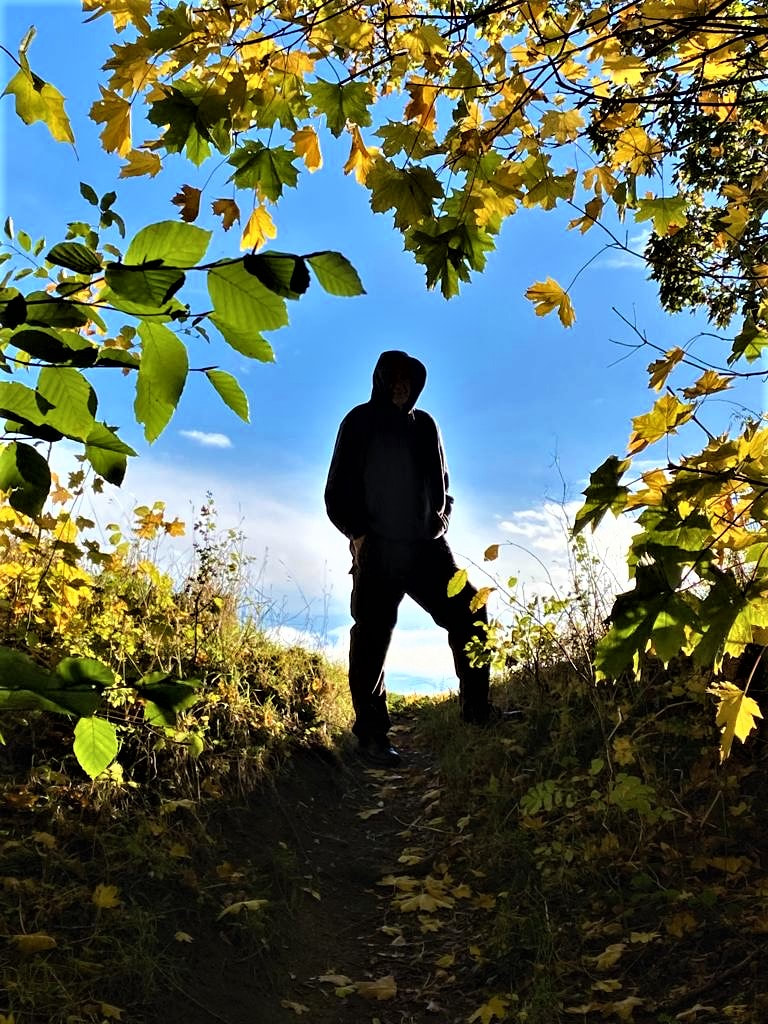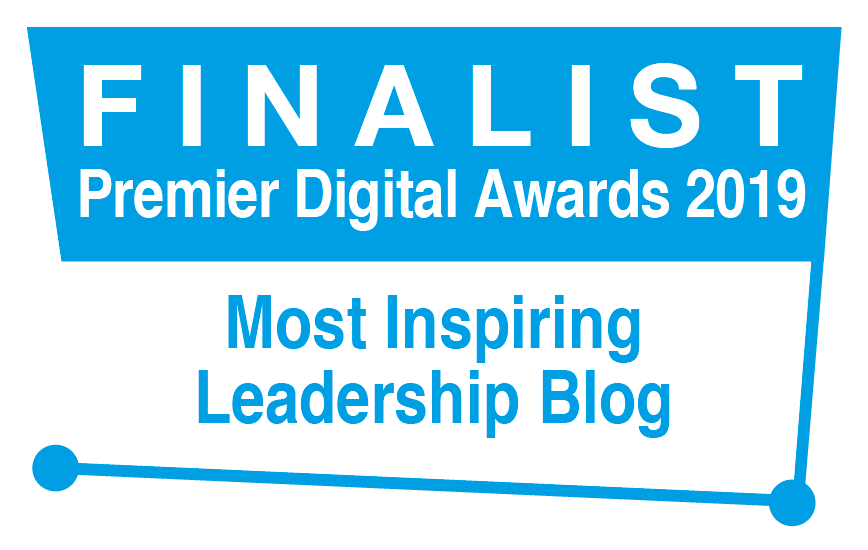|
‘When trouble arises and things look bad, there is always one individual who perceives a solution and is willing to take command. Very often, that person is crazy.’ (Dave Barry) We can think of leadership as the property of a structure, in which a person designated as a 'leader' holds particular responsibilities and has, at least in principle, the hierarchical authority needed to fulfil them. We can also think of leadership as an intrinsic property of an individual. In this sense, leadership is something that resides within and emanates from a person, something that she or he has and does. This is the realm of competency frameworks and of leader-development initiatives. We can also think of leadership as the property of a group; for instance, a leadership team. In this idea, shared leadership is something exercised by a collective, where a diverse united group is, in potential, more than the sum of its parts. We can also think of leadership as a property of a dynamically-complex eco-system, in which acts of leadership emerge, sometimes unexpectedly and from unexpected places, and exert influence. This is the arena of dispersed and distributed leadership. In organisations, I’m finding the latter perspective especially useful. When working with leadership teams, I invite participants to reflect on the eco-system (cf Gestalt: field) as a whole; for instance: 'Where is leadership-as-influence exercised, inside or outside of the organisation’s boundaries? What are the distinctive roles and responsibilities of different 'leadership' entities within the system? What are the relationships between them? What does each need from the others to be effective?' I notice this invariably opens up far deeper, wider and richer conversations than those that focus on individual leaders alone, or leadership teams in isolation, as if they exist in a cultural-contextual vacuum. Some people find it useful to experiment with mapping their eco-system graphically, recognising that any depiction will reveal and, therefore, create opportunity to open up to healthy exploration and challenge, the way in which they construe their reality and leadership dynamics within it.
16 Comments
‘How can we make the snakes feel safe?’ The power of metaphor. Last week I worked with a group of trauma-informed practice experts. We were thinking about leading and influencing change in dynamically-complex relational systems such as teams and organisations. I shared the image of a snakes-and-ladders game board as a way both of depicting the realities of such change experiences and as a way of managing expectations. Whilst playing with possible meanings for the snakes, the ladders and the game as a whole, we explored how, at times, those people or groups we may view as passive, blocking or undermining vis a vis our own plans may be acting out of anxiety. I was reminded of Richard Young’s two key questions in the organisation development (OD) arena: ‘Where's the power and how is it exercised?’ ‘Where's the anxiety and how does it manifest itself?’ In my experience, we may discover anxiety in all dimensions of human systems. Take, for instance, the leader who is feeling pressured by multiple tasks and demands and worried that the well-meaning initiative you are proposing will be the straw that breaks the camel’s back. Or the team member who is worried that the change you are advocating will increase her responsibilities and leave her feeling inadequate, deskilled or exhausted. I worked with a new senior leader who, in our monthly meetings, would ask me lots of very detailed financial questions. I found it time-consuming and stressful because, although I felt confident in managing my budget, I wasn’t used to reporting at such micro levels. Over time, I began to wonder if I might inadvertently have started to represent a snake in his system…and he in mine. At our next meeting, I asked what he would need from me to give him sufficient trust and confidence in my financial management that I wouldn’t need to report like this in subsequent months. He said: ‘If you were to report using financial language.’ I discovered that, as a Finance Director by background and accountable for my area at Executive level, my limited use of financial language had evoked anxiety in him that I may not have a grip on my team’s finances. I spoke with Finance, expanded my lexicon, reported briefly using his language at the next meeting – and we never returned to micro detail again. The principle here was to approach the person and the issue in an open spirit of curiosity, explore respective needs, identify tangible solutions, and apply them to practice. We both transformed from snakes into ladders and our relationship grew from strength to strength. ‘You can lead a horse to water, but you cannot make it think.’ (Mark Lawson, Twisted Idioms)
My mind, heart and soul have been turned upside down, inside out. I’ve had the privilege and, at times, intense discomfort of being mentored by a Chinese coach and Christian pastor. I half-jokingly call her Why, rather than her real name Wei, because of her courage and tenacity in pressing deeper, innocently, with the next question. My usual subconscious ways of getting myself off the hook have failed miserably. My beliefs, values and behaviour have all been thrown into question. Wei’s natural orientation towards critical reflexivity means she examines her own attitudes and behaviour transparently – and reflects on them honestly first. She displays child-like curiosity with adult wisdom. She’s far more interested in following God authentically in her life and work than in preserving a superficial relationship or presenting a perfect front. To show real love is more important to her than to win an argument. Her spiritual maturity humbles and inspires me. A person like this presents more than a skill. They demonstrate leadership-by-example. I became aware, over time, of situations in my own life and work that I could have handled very differently; of some of my own defensive routines that I didn’t even know I had. I discovered that I sometimes dig my heels in (something that will, no doubt, come as no surprise to people who know me) and that I can be, at times, more concerned with establishing ‘truth’ than building true relationship. What I experienced here is, I believe, one of the great gifts of leadership, mentoring and coaching. It’s an encounter with a real person that can evoke and provoke fresh awareness and insight. A role model represents an invitation, not an expectation. She or he can inspire curiosity and a desire to think, learn and grow. When have you encountered transformational presence? How do you demonstrate it in your own leading, mentoring or coaching practice? I’d love to hear from you! ‘Who started this work – the organisation’s founder, or the child who inspired him to do it?’ This challenge came as a healthy jolt, a moment of insight and inspiration, from Carlos, a humble, radical leader working with poor communities in Brazil. It was at an induction event for new leaders of a now very large, global non-governmental organisation (NGO). Its history was being presented through the lens of the organisation’s founder and its successive global presidents. The founder was a war photographer who had been appalled to see the terrible suffering of children during the Korean War. An encounter with a child had galvanised his determination to do something about it. The resultant NGO had worked very hard over the years to support poor and vulnerable children throughout the world and had indeed achieved some remarkable results. Over time, however, as the organisation had grown in scale and scope, it had started increasingly to view the world through an organisational lens rather than through the eyes of a child. The simple-yet-profound voice of a child had become lost in the midst of complex strategies, structures, policies, plans and programmes. The presidential perspective symbolised a shift from client/beneficiary-centric to organisation-centric. Why is this important? Firstly, this child’s interaction with and influence on the founder challenges traditional ideas of leadership as a hierarchical-structural phenomenon rather than, as according to Chris Rodgers (2015), ‘an emergent property of people interacting together, not as an elite practice confined to those at the top of organizations.’ Secondly, this NGO’s experience highlights the risk of subtle-yet-critical drifts away from a customer-client, outside-in focus to an intra-organisational, inside-out/inside-inside focus. How can we address these issues as leaders, coaches, OD and trainers? Can I help you develop authentic and client-focused leadership and culture? Get in touch! [email protected] Why think outside of the box when you could dispense with the box altogether? Rosabeth Moss-Kanter commented recently on Twitter that ‘To lead real change, it’s not enough to think outside of the box. We need to think outside of the building.’ It reminded me of Chris Argyris who, some years ago, coined the phrase ‘learning loops’ to describe different levels of learning and application:
Single loop learning asks the question, ‘Are we doing this right?’, e.g. ‘Do we have a clear agenda for today’s meeting?’ Double loop learning steps back to ask, ‘Are we doing the right things?’, e.g. ‘Is a meeting really the best way to do this?’ Triple loop learning steps back further still to ask, ‘How do we decide what is right?’, e.g. ‘Are we focusing our attention on the most important things?’ Each step back brings new dimensions into the frame, surfacing and thereby opening assumptions to challenge. I think of it like concentric circles, ripples on a pond, ever moving outwards from the initial point of impact or concern. It exposes wider systems. It shifts the focus onto broader cultural or contextual issues in order to make sense of and take decisions within a narrower domain. There are some parallels with strategic, tactical and operational lenses, aimed at ensuring effectiveness. Peter Drucker commented: ‘Nothing is less productive than to make more efficient what should not be done at all.’ How much resource do we waste in organisations inadvertently paying one person or team to burn the proverbial toast and another to scrape off the burnt bits? So we are really looking at how to ask fundamental questions. ‘What is the purpose of our organisation in the world?’ I mean existentially or spiritually, not just pragmatically. 'Why are we here?', ‘What is shaping our values?’, ‘What are we aware of?’, ‘What are we blind to, filtering out?’, ‘What matters most to us, and why?’, ‘Why are we doing things this way?’, ‘Who or what is really driving this?’ This type of critique is where things get tricky and, potentially, revolutionary. Organisations, as people, shape their own perception of reality, what is real and what is true, by the way they construe situations, the narratives they create to explain their experiences, the rationalisations they use to justify their actions etc. And most of this is subconscious, hidden behind cultural filters and defences. Deconstructing the box entails a willingness to acknowledge it first – to explore and reveal the unspoken, the unspeakable, the not-yet imagined. As leaders and coaches, it calls for vulnerability and courage. It demands a preparedness to challenge and be challenged, to open our eyes, perhaps pray, to expose our limits, our assumptions, our implicit collusion with what is and what appears to be. How would you describe your coaching style? What questions would you bring to a client situation?
In my experience, it depends on a whole range of factors including the client, the relationship, the situation and what beliefs and expertise I, as coach, may hold. It also depends on what frame of reference or approach I and the client believe could be most beneficial. Some coaches are committed to a specific theory, philosophy or approach. Others are more fluid or eclectic. Take, for instance, a leader in a Christian organisation struggling with issues in her team. The coach could help the leader explore and address the situation drawing on any number of perspectives or methods. Although not mutually exclusive, each has its own focus and emphasis. The content and boundaries will reflect what the client and coach believe may be significant: Appreciative/solutions-focused: e.g. ‘What would an ideal team look and feel like for you?’, ‘When has this team been at its best?’, ‘What made the greatest positive difference at the time?’, ‘What opportunity does this situation represent?’, ‘On a scale of 1-10, how well is this team meeting your and other team members’ expectations?’, ‘What would it take to move it up a notch?’ Psychodynamic/cognitive-behavioural: e.g. ‘What picture comes to mind when you imagine the team?’, ‘What might a detached observer notice about the team?’, ‘How does this struggle feel for you?’, ‘When have you felt like that in the past?’, ‘What do you do when you feel that way?’, ‘What could your own behaviour be evoking in the team?’, ‘What could you do differently?’ Gestalt/systemic: e.g. ‘What is holding your attention in this situation?’ ‘What are you not noticing?’, ‘What are you inferring from people’s behaviour in the team?’, ‘What underlying needs are team members trying to fulfil by behaving this way?’, ‘What is this team situation telling you about wider issues in the organization?’, ‘What resources could you draw on to support you?’ Spiritual/existential: e.g. ‘How is this situation affecting your sense of calling as a leader?’, ‘What has God taught you in the past that could help you deal with this situation?’, ‘What resonances do you see between your leadership struggle and that experienced by people in the Bible?’, ‘What ways of dealing with this would feel most congruent with your beliefs and values?’ An important principle I’ve learned is to explore options and to contract with the client. ‘These are some of the ways in which we could approach this issue. What might work best for you?’ This enables the client to retain appropriate choice and control whilst, at the same time, introduces possibilities, opportunities and potential new experiences that could prove transformational. It was an energising experience, facilitating a group of leaders this week who are keen to build a new high performing team. We pushed the boundaries of normal ways of working to stimulate innovative ideas in all aspects of the team’s work. We used photos to create an agenda and physically enacted people’s aspirations to avoid falling into conventional patterns of heady, rational conversation. It felt very different to meeting ‘because that’s what we do’. There was a different dynamic, energy and momentum. Participants leaned actively into the conversation, not leaning back in passivity or boredom. Yet it can be a real challenge to break free from tradition, from norms that trap a team in ways of doing things that feel familiar and safe but, deep down, lack inspiration or effectiveness. In our meetings, how often do we pause before diving into the agenda to ask, ‘What’s the most important thing we should be focusing on?’, ‘How are we feeling about this?’, ‘What is distracting us or holding our attention?’, ‘What could be the most creative and inspiring way to approach this?’, ‘What do we each need, here and now, to bring our best to this?’, ‘What would be a great result?’ So I presented a simple model to the team with four words: content (what), process (how) and relationship (who) encircled around goal (where). In all my experience of working with individuals and teams, whether in coaching, training or facilitation, whether in the UK or overseas, these four factors are key recurring themes that make a very real difference. They seem to be important factors that, if we get them right, make a positive impact. They lead to people feeling energised, more alive, more motivated and engaged. Conversely, if we get them wrong, they leave people frustrated, drained of energy, bored or disengaged. Worse still, if left unaddressed, they can lead to negative, destructive conflict that completely debilitates a team. We can use a simple appreciative inquiry to reflect on this.‘Think back to your best experience of working with another person or team. How did you feel at the time?’, ‘Think back to a specific example of when you felt like that with the person or team. Where were you at the time? What were you doing? What were they doing? What made the biggest positive difference for you?’ One of the things we notice when asking such questions is that different things motivate and energise different people. That is, of course, one of the tricky parts of leading any team. So a next question to pose could be something like, ‘What would it take for this team to feel more like that, more of the time for you?’ and to see what the wider team is willing to accommodate or negotiate. Now back to the model with some sample prompts to check out and navigate with a client, group or team. Notice how the different areas overlap and impact on each other. It’s about addressing all areas, not just to one or two in isolation. However, having explored each area in whatever way or level suits your situation, you are free to focus your efforts on those that need special attention. Goal: ‘What’s your vision for this?’, ‘Why this, why now?’, ‘What are you hoping for?’, ‘What would make a great outcome for you?’, ‘What would be the benefits of achieving it or the costs of not achieving it?’, ‘Who or what else is impacted by it and how?, ‘Where would you like to get to by the end of this conversation?’, ‘An hour from now, what would have made this worthwhile?’ Content: ‘What’s the most important issue to focus this time on?’, ‘What is the best use of our time together?’, ‘What is the issue from your perspective?’, ‘How clear are you about what this issue entails?’, ‘What feelings is this issue evoking for you?’, ‘What do we need to take into account as we work on this together?’, ‘Do we have the right information and expertise to do this?’ Process: ‘How would you like to do this?’, ‘What approach would you find most inspiring?’, ‘What might be the best way to approach this given the time available?’, ‘Which aspects to we need to address first before moving onto others?’, ‘What would be best to do now and what could be best done outside of this meeting?’, ‘Could we try a new way that would lift our energy levels?’ Relationship: ‘What’s important to you in this?’, ‘What underlying values does this touch on for you?’, ‘How are you impacted?’, ‘How are you feeling?’, ‘What are you noticing from your unique perspective?’, ‘What distinctive contribution could you bring?’, ‘What is working well in the team’s relationships?’, ‘What is creating tension?’, ‘How could we resolve conflicting differences?’ The versatility of the model is that it can be reapplied to coaching, training and other contexts too. In a training environment you could consider, for instance, ‘What are we here to learn?’ (goal), ‘What material should we cover?’ (content), ‘What methods will suit different learning styles?’ (process) and ‘How can we help people work together well in this environment?' (relationship). In a coaching context it could look something like, ‘How do you hope to develop through engaging in this coaching experience?’ (goal), ‘What issues, challenges or opportunities would you like to focus on?’ (content), ‘How would you like to approach this together?’ (process) and ‘What would build and sustain trust as we work on these things together?’ (relationship). I’d be interested to hear from you. Do the areas represented in this model resonate with your own experiences? Which factors have you noticed tend to be most attended to or ignored? Do you have any real-life, practical examples of how you have addressed these factors and what happened as a result? In your experience, what other factors make the biggest difference? ‘What is most important about any event is not what happened, but what it means. Events and meanings are loosely coupled: the same events can have very different meanings for different people because of differences in the schema that they use to interpret their experience.’ These illuminating words from Bolman & Deal in Reframing Organisations (1991) have stayed with me throughout my coaching and OD practice.
They have strong resonances with similar insights in rational emotive therapy and cognitive behavioural therapy. According to Ellis, what we feel in any specific situation or experience is governed (or at least influenced) by what significance we attribute to that situation or experience. One person could lose their job and feel a sense of release to do something new, another could face the same circumstances and feel distraught because of its financial implications. What significance we attribute to a situation or experience and how we may feel and act in response to it depends partly on our own personal preferences, beliefs, perspective and conscious or subconscious conclusions drawn from our previous experiences. It also depends on our cultural context and background, i.e. how we have learned to interpret and respond to situations as part of a wider cultural group with its own history, values, norms and expectations. A challenge and opportunity in coaching and OD is sometimes to help a client (whether individual or group) step back from an immediate experience and reflect on what the client (or others) are noticing and not noticing, what significance the client (or others) are attributing to it and how this is affecting emotional state, engagement, choices and behaviour. Exploring in this way can open the client to reframing, feeling differently and making positive choices. In his book, Into the Silent Land (2006), Laird makes similar observations. Although speaking about distractions in prayer and the challenges of learning stillness and silence, his illustrations provide great examples of how the conversations we hold in our heads and the significance we attribute to events often impact on us more than events themselves. He articulates this phenomenon so vividly that I will quote him directly below: ‘We are trying to sit in silence…and the people next door start blasting their music. Our mind is so heavy with its own noise that we actually hear very little of the music. We are mainly caught up on a reactive commentary: ‘Why do they have to have it so loud!’ ‘I’m going to phone the police!’ ‘I’m going to sue them!’ And along with this comes a whole string of emotional commentary, crackling irritation, and spasms of resolve to give them a piece of your mind when you next see them. The music was simply blasting, but we added a string of commentary to it. And we are completely caught up in this, unaware that we are doing much more than just hearing music. ‘Or we are sitting in prayer and someone whom we don’t especially like or perhaps fear enters the room. Immediately, we become embroiled with the object of fear, avoiding the fear itself, and we begin to strategise: perhaps an inconspicuous departure or protective act of aggression or perhaps a charm offensive, whereby we can control the situation by ingratiating ourselves with the enemy. The varieties of posturing are endless, but the point is that we are so wrapped up in our reaction, with all its commentary, that we hardly notice what is happening, although we feel the bondage.’ This type of emotional response can cloud a client’s thinking (cf ‘kicking up the dust’) and result in cognitive distortions, that is ways of perceiving a situation that are very different (e.g. more blinkered or extreme) than those of a more detached observer. In such situations, I may seek to help reduce the client’s emotional arousal (e.g. through catharsis, distraction or relaxation) so that he or she is able to think and see more clearly again. I may also help the client reflect on the narrative he or she is using to describe the situation (e.g. key words, loaded phrases, implied assumptions, underlying values). This can enable the client to be and act with greater awareness or to experiment with alternative interpretations and behaviours that could be more open and constructive. Finally, there are wider implications that stretch beyond work with individual clients. Those leading groups and organisations must pay special attention to the symbolic or representational significance that actions, events and experiences may hold, especially for those from different cultural backgrounds (whether social or professional) or who may have been through similar perceived experiences in the past. If in doubt, it’s wise ask others how they feel about a change, what it would signify for them and what they believe would be the best way forward. Calling has long-standing roots in theistic spiritual traditions, often associated with being ‘called by God’ to a certain way of life or to a specific course of action. Existential psychologists have commented on how sometimes it feels like a situation is calling for its own response from us. In both cases, the source of the calling is attributed to someone or something beyond us. It’s a phenomenon that can feel like an evocative pull, tugging at something deep within us.
I’ve experienced this many times since becoming a Christian, a strange intuition that feels beyond me, prompting or leading me in a certain direction. Sometimes it seems very clear or inspiring, at others it’s more of a vague notion, a restlessness that compels me to move or change. I’ve often experienced it in coaching relationships too, an almost irresistible impulse to speak or act that feels like revelation, an energising compulsion from the situation itself. It’s not magic, something I can make happen, something I can manufacture for myself. It’s sometimes unexpected, sometimes challenging and sometimes involves scary risk-taking. It’s not definitive either, something I can measure, test or prove in a lab. This can make the experience of calling feel mysterious, sometimes spiritual, a step in faith in response to a curious, invisible stimulus. It’s as if something ‘out there’ connects with something ‘in here’, setting up a dynamic resonance. So how to apply this in leadership and coaching? How to listen for and discern calling in the midst of so many other tasks and preoccupations that clamour for our attention? How to weigh up calling in order to act wisely? In my experience, there is no simple formula. It’s mostly about learning to be still, to live with awareness, to tune into my intuition, to be sensitive to prompts from the situation itself, to experiment and see what happens, to be open to God in prayer. I wish I could say I always follow this call. Sometimes I'm sceptical, sometimes I pull back for fear of embarrassment or failure. Nevertheless, I've seen and felt amazing things happen when I do listen and act. I would love to hear from others on this topic of calling. When have you felt called? What was the situation? What did the experience of calling feel like? What did you attribute the calling to? How did you act in response? What happened as a result? I had a new, short, mini-article published online in About Leaders this week called, ‘What is really going on here?’
http://www.aboutleaders.com//bid/176196/leadership-dynamics-what-is-really-going-on-here?source=Blog_Email_[Leadership%20Dynamics%3A. It introduces examples of different frames of reference we may use when working with people as a leader or coach. I would love to hear what you think, what frames you use and what experiences you have in this area. Looking forward to hearing from you! |
Nick WrightI'm a psychological coach, trainer and OD consultant. Curious to discover how can I help you? Get in touch! Like what you read? Simply enter your email address below to receive regular blog updates!
|








 RSS Feed
RSS Feed